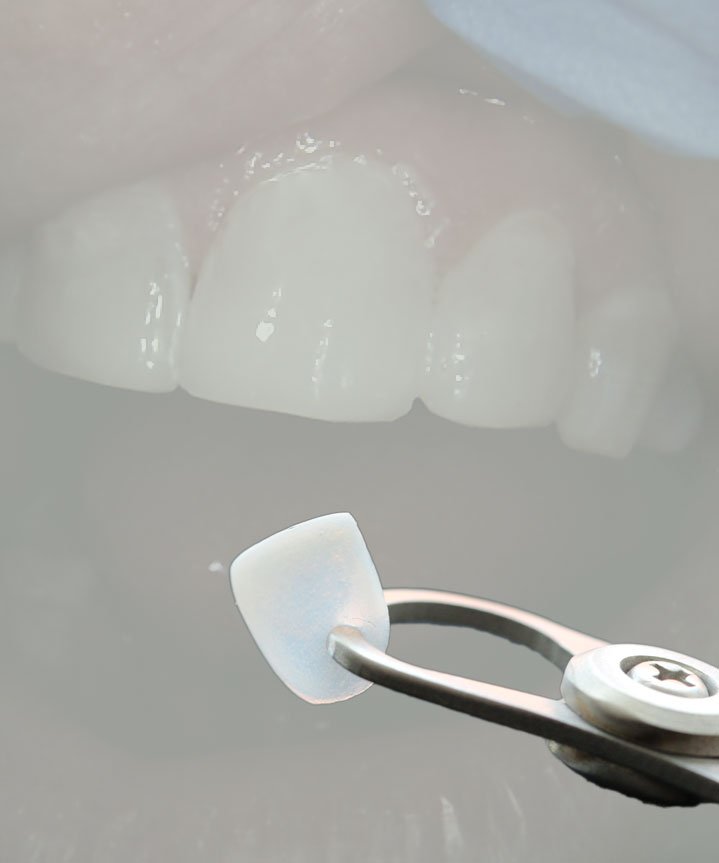Dental Veneers
We all know that one of most beautiful things to see is a quality smile. If you are someone who has crooked or chipped teeth, however, you know that smiling can be embarrassing and make you extremely self-conscious. If you’re looking for a way to fix dental issues that keep you from enjoying your own smile, you can consider porcelain dental veneers. These are often the best choice for older patients, so take a look and see if they are the right choice for you.
What are they?
First thing’s first, let’s understand what exactly porcelain veneers are. These are thin pieces of porcelain that are specifically shaped to fit over the front of your teeth. Carefully constructed and shaped, these are strong and carefully tinted to match your other teeth, giving you a natural, strong and perfect smile.
This offers a “quick fix” for the patient who wants to be able to enjoy a healthy smile that is strong and designed to last for a long time, all while being specifically designed for them in particular.
Are they the best option?
No matter what the professionals will tell you, choosing veneers for your teeth is completely up to you and your lifestyle. These are meant for chipped teeth or weak teeth that need some long-term and strong damage control. This can also help those who have a gap between the teeth or have minor bite-related issues. Other options have to be discussed with your dentist like full crowns, orthodontic work, resin or no treatment at all.
How are they placed?
The process for veneers typically expands over several appointments. First, the dentist is going to have to remove approximately a millimeter of enamel from the surface of each tooth. This, along with an impression mould of the inside of your mouth will be sent to a dental laboratory by a technician. When being made in a laboratory, it will take two appointments for the process to be complete. Here are the different steps:
- If you have sensitivity issues, local anesthetia can be applied to the area for treatment, though it isn’t often required in this kind of procedure. Firstly, the tooth will be properly cleaned, then the enamel will be removed, the mould will be made, and this will all be sent off to the laboratory, as mentioned.
- While you wait for this to be completed, you will receive a temporary veneer that is going to contain spot etching in the center of the tooth.
- Once your custom veneer is ready, you will have the temporary veneer removed and the tooth will be thoroughly cleaned with pumice and water. The veneer will also be carefully etched, rinsed, and air-dried before the veneer is cemented and placed for the perfect, exact fit and contour of your natural tooth.
- When it is in place, your veneer will be light cured for about a minute on all of the surfaces that are attaching to the tooth.
- Once that is done, the dentist will carefully remove any kind of excess material, and then polish the veneer to make sure that it is a perfect fit and looks great. You’ll probably have a follow up appointment to make sure that everything is fitting comfortably, which will allow you to make sure that you’re getting the best quality for a beautiful smile, long-term.
Pros and cons
As you probably could have guessed, there are both pros and cons to be had with this kind of procedure. We’ve organized them here for you to take a look at.
Pros
- You will be part of the design process: You are in charge of determining how you want your smile to look after veneers, meaning you’ll be able to essentially choose what issues you want to fix and which you don’t mind leaving the same. You’ll be building your own smile.
- Does not require much tooth structure loss: You will only be losing an absolutely minimum of the tooth’s original structure so that you can get the perfect fit for a better, still natural smile that you won’t be able to to wait to show off.
- Will deter staining: You’ll be happy to hear that staining won’t be as present on veneers as it is on traditional enamel, seeing as they are made from porcelain.
Cons
- Permanent: Veneers are permanent. Once the enamel is removed from the original tooth, the porcelain overlays and the colour of them are going to have to stay there until they need to be replaced.
- May give slight sensitivity: For a few days after the procedure, you may a higher sensitivity due to the change in your teeth. This will fade away in time.
- No more gum or chewing nails: You’ll have to cut out the idea of chewing gum or biting your nails, as this can cause damage to your veneers and weaken them faster.
Typical care:
It’s important to note that no matter how well you take care of your veneers, they will eventually have to be replaced. To extend their life, however, try to avoid staining food and drink such as coffee. Use a non-abrasive fluoride toothpaste and clean them as you would normally with your other teeth, including flossing.
Remember that veneers might be able to help you get the quality smile you’ve always been dreaming about, so consider this information and see if it’s the right choice for you.
If you are looking for a local dentist in Oakville, please contact us for your free veneer consultation at 905 465 0026


